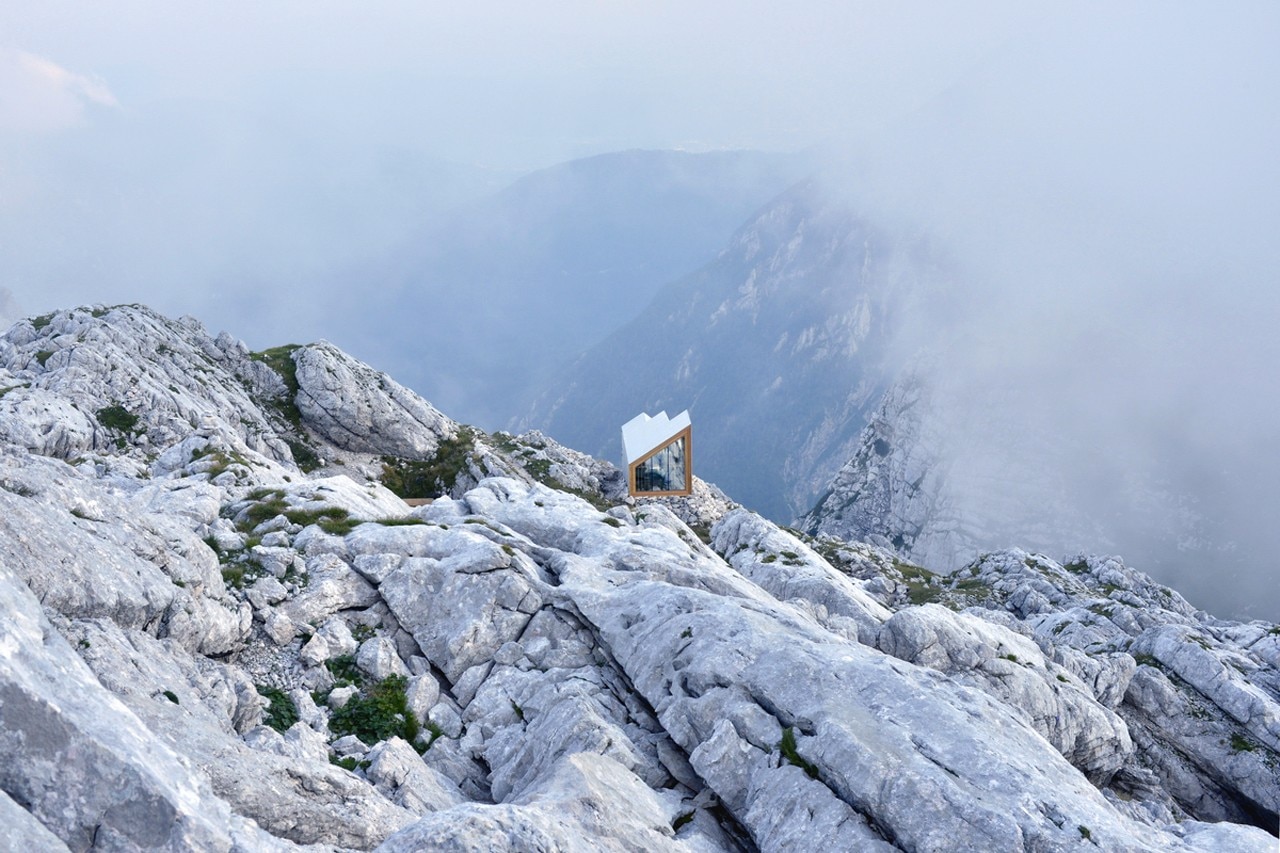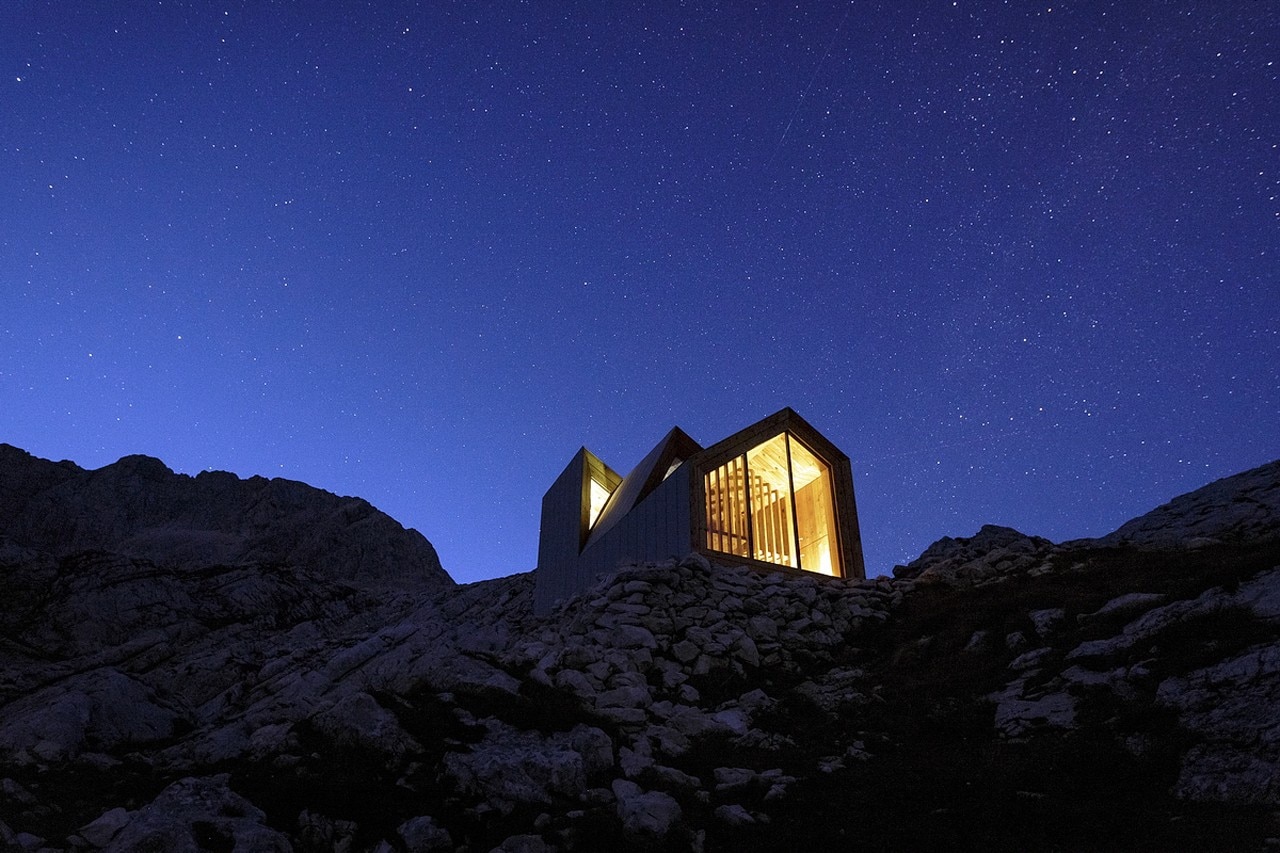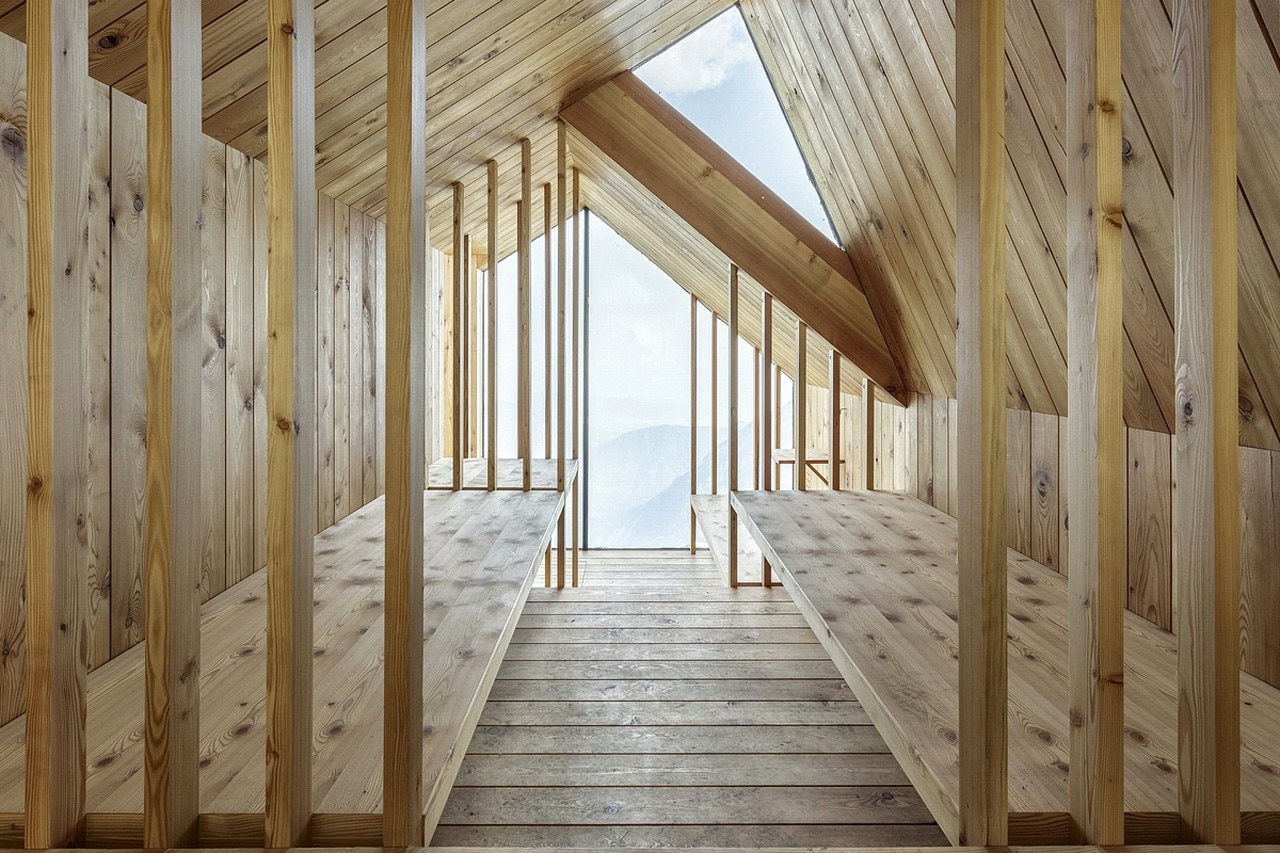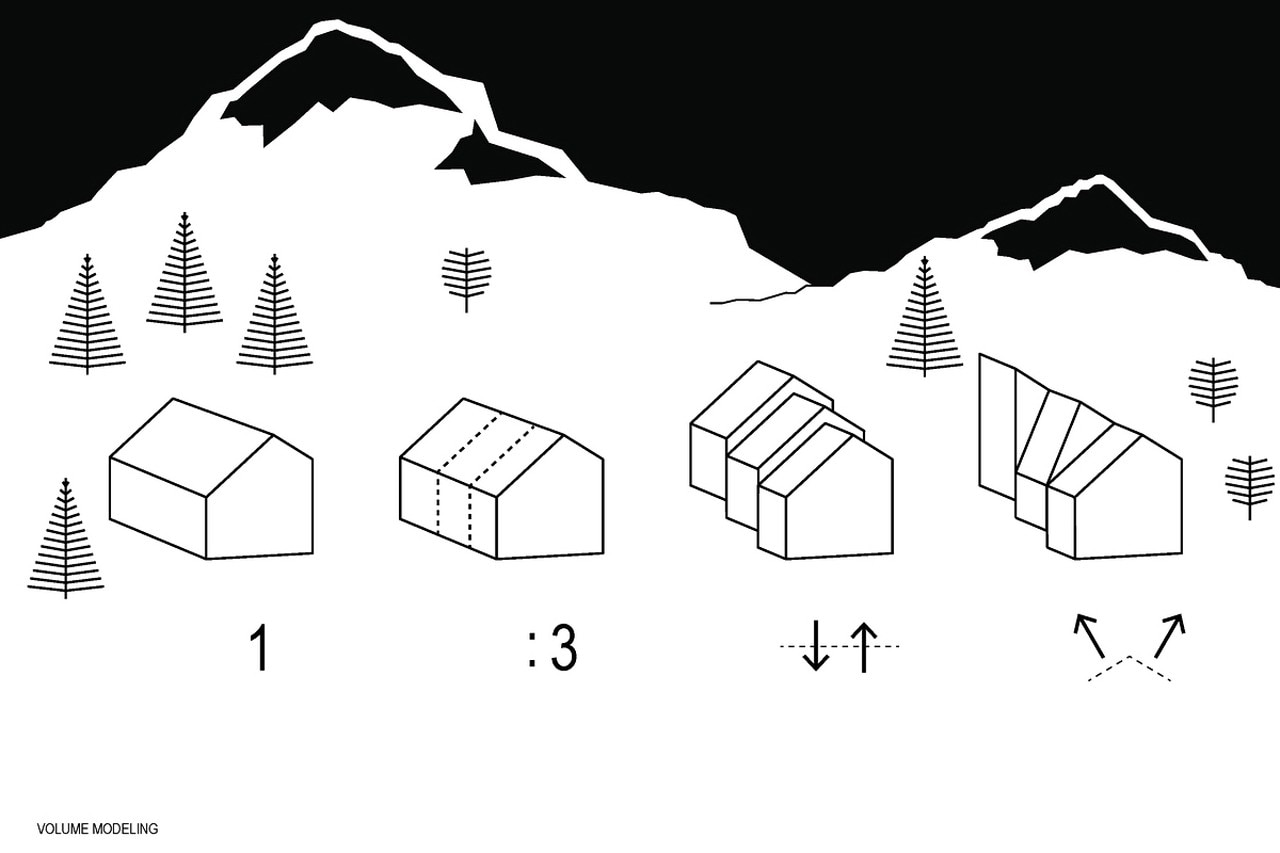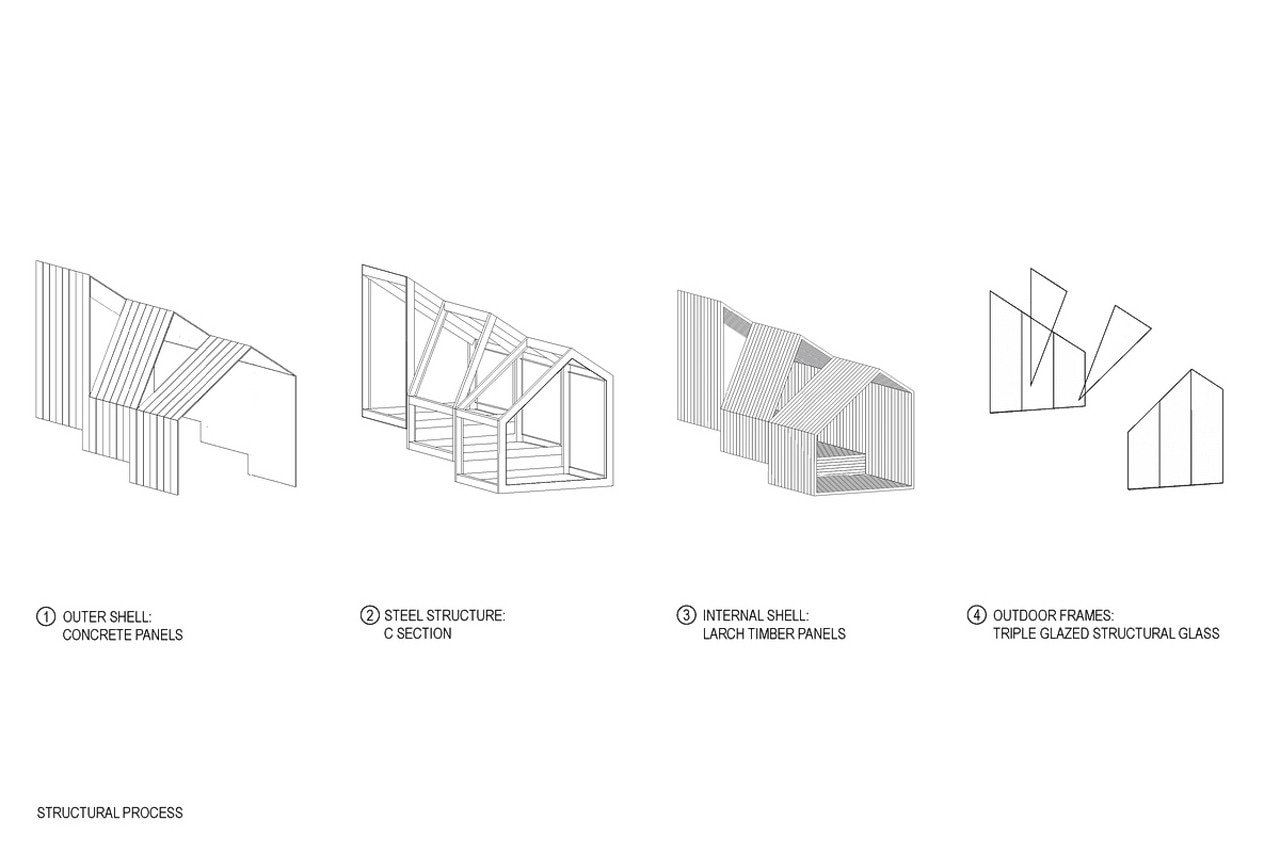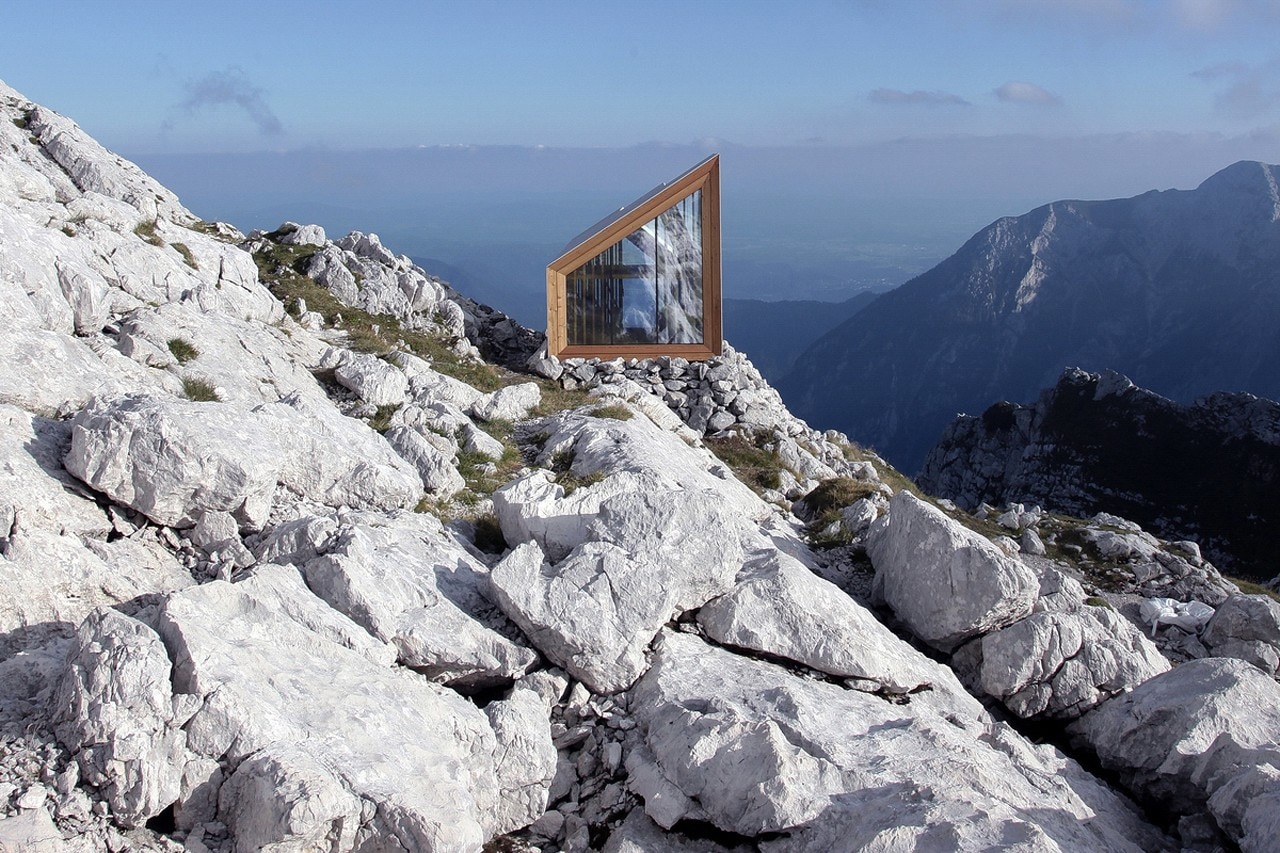
The extreme climatic conditions in the mountains introduce a design challenge for architects, engineers and designers. Within a context of extreme risk to environmental forces, it is important to design buildings that can withstand extreme weather, radical temperature shifts, and rugged terrain.
Responding to environmental conditions is not only a protective measure, but also translates into a matter of immediate life safety. The harsh conditions of wind, snow, landslides, terrain, and weather require a response of specific architectural forms and conceptual designs.
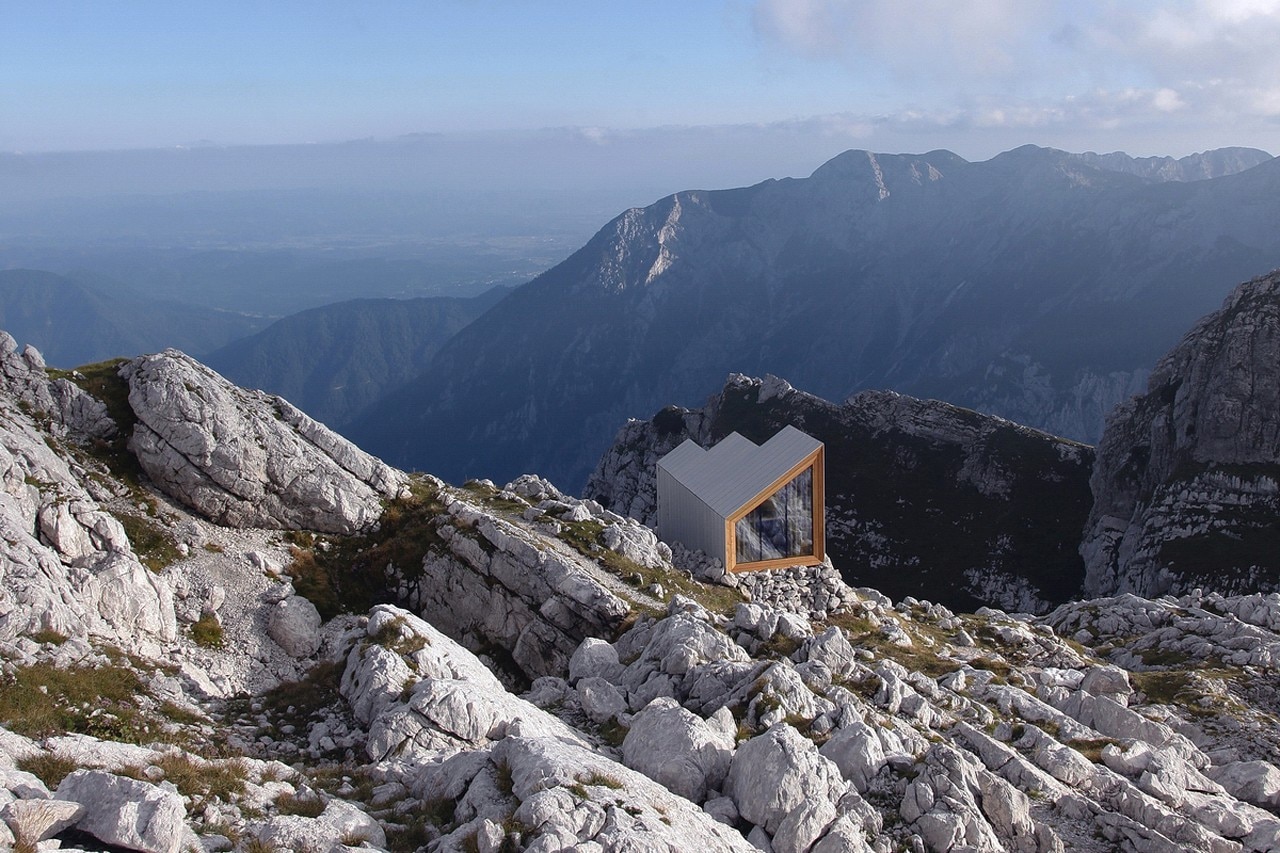
Informed by traditional alpine architecture, building elements, materials, structure and form, the design scheme by students Frederick Kim, Katie MacDonald and Erin Pellegrino was selected. After conclusion of the academic semester, OFIS architects and structural engineers AKT ll continued to and develop and adapt the form to the given site, responding to further input from the mountaineers, Anze Cokl, Milan Sorc and other engineers.
The design consists of three modules, in part to allow for transport and also to programmatically divide the space. The first is dedicated to the entrance, storage and a small space for the preparation of food. The second one provides space for both, sleeping and socializing while the third features a bunk sleeping area. Windows at both ends offer beautiful panoramic views of the valley and Skuta Mountain.
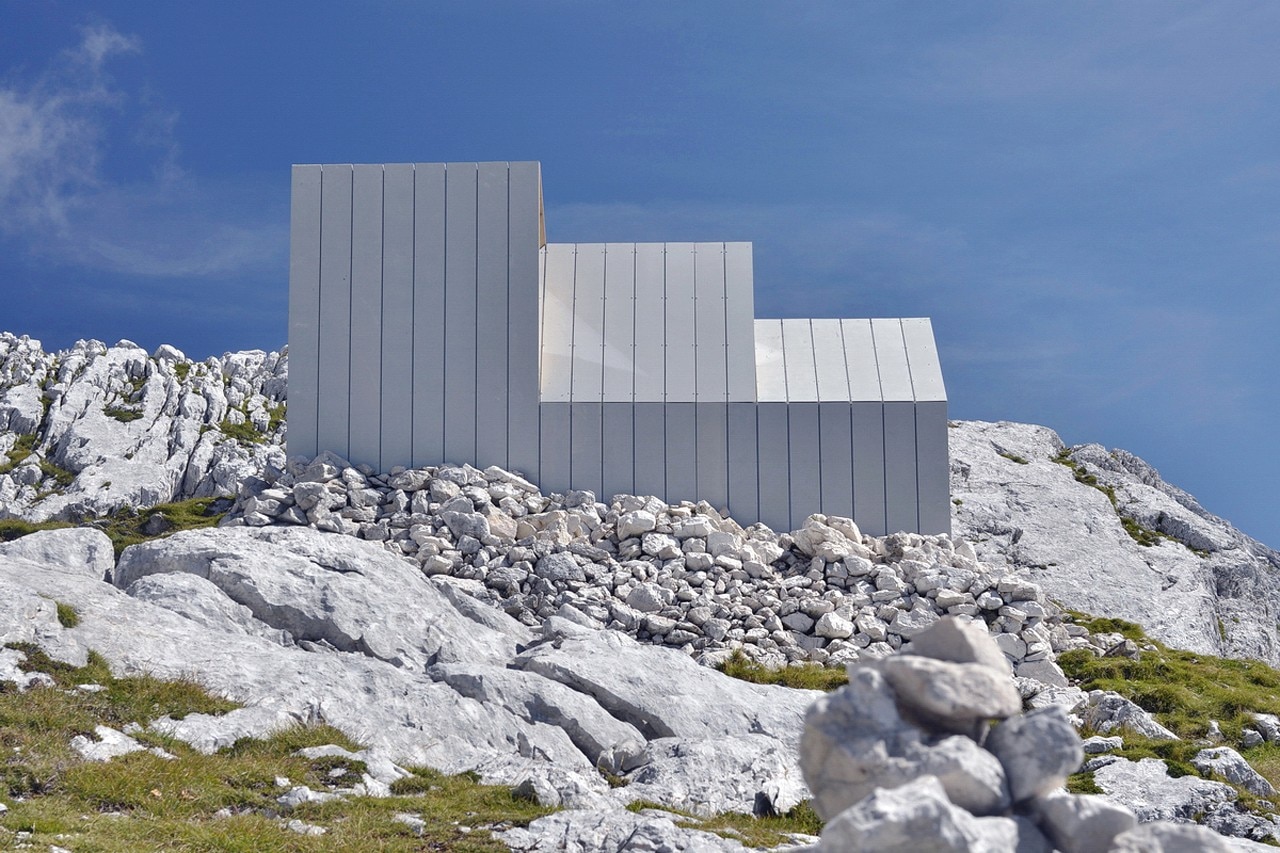
Due to the nature of the installation process, the shelter was designed as a series of modules so that it could be brought to the mountain in parts. The entire prototype was constructed off-site in the workshop. The modules were planned as a series of robust frames, which would then be braced together onsite providing a manageable installation and a less invasive foundation. In order to keep the mountain site as undisturbed as possible, the modules are fastened onto strategically placed pin connections, which also act as the foundation on the site.
Although the scale of the bivouac is small, the project required a lot of effort and planning from over sixty participants who were mostly volunteers and sponsors. However, all of the effort and planning for this small scale project is meant to keep the memory, spirit and culture of the mountains as a special place for Slovenians. The hope is that the bivouac will serve as a shelter for all of the climbers who need it, and that through their care and attention the bivouac will continue to do so for many years.
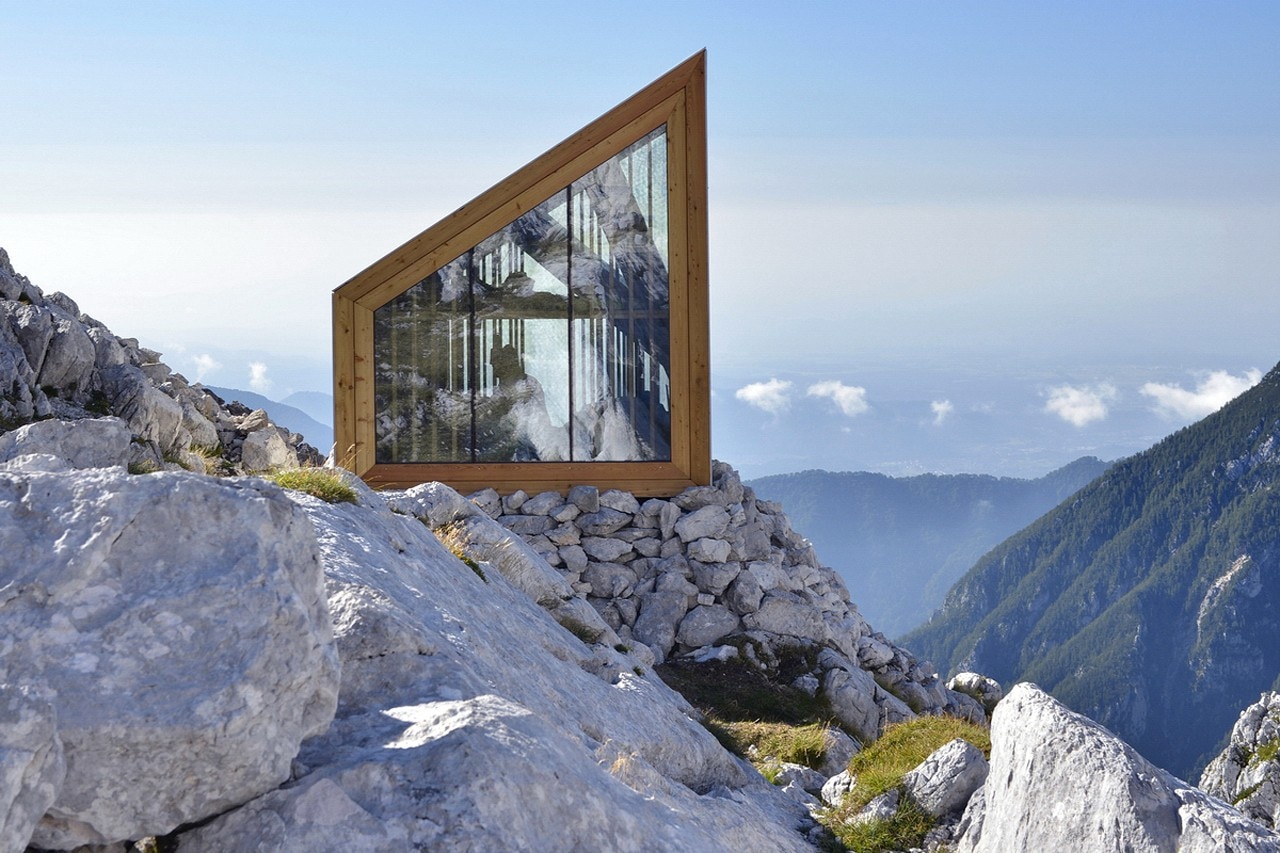
Alpine Shelter on Skuta Mountain, Slovenia
Program: alpine shelter
Architects: OFIS architects (Rok Oman, Spela Videcnik)
Student Design Team, Harvard GSD: Frederick Kim, Katie MacDonald, Erin Pellegrino
OFIS architects Team: Andrej Gregoric, Janez Martincic, Maria Della Mea, Vincenzo Roma, Andrea Capretti, Jade Manbodh, Sam Eadington
Structural Engineering: AKT II (Hanif Kara, Edward Wilkes)
Local Structural Engineering: Projecta, Milan Sorc
Engineering & Consulting: Freeapproved, Anze Cokl
Realization & onsite Coordination: PD Ljubljana Matica (Matevz Jerman, Davor Rozman)
Facade – öko skin: Rieder Smart Elements (Wolfgang Rieder, Matthias Kleibel)
Glazing: Guardian (Domen Komac)
Principal Contractor: Permiz d.o.o. (Bostjan Perme)
Completion: 2015


